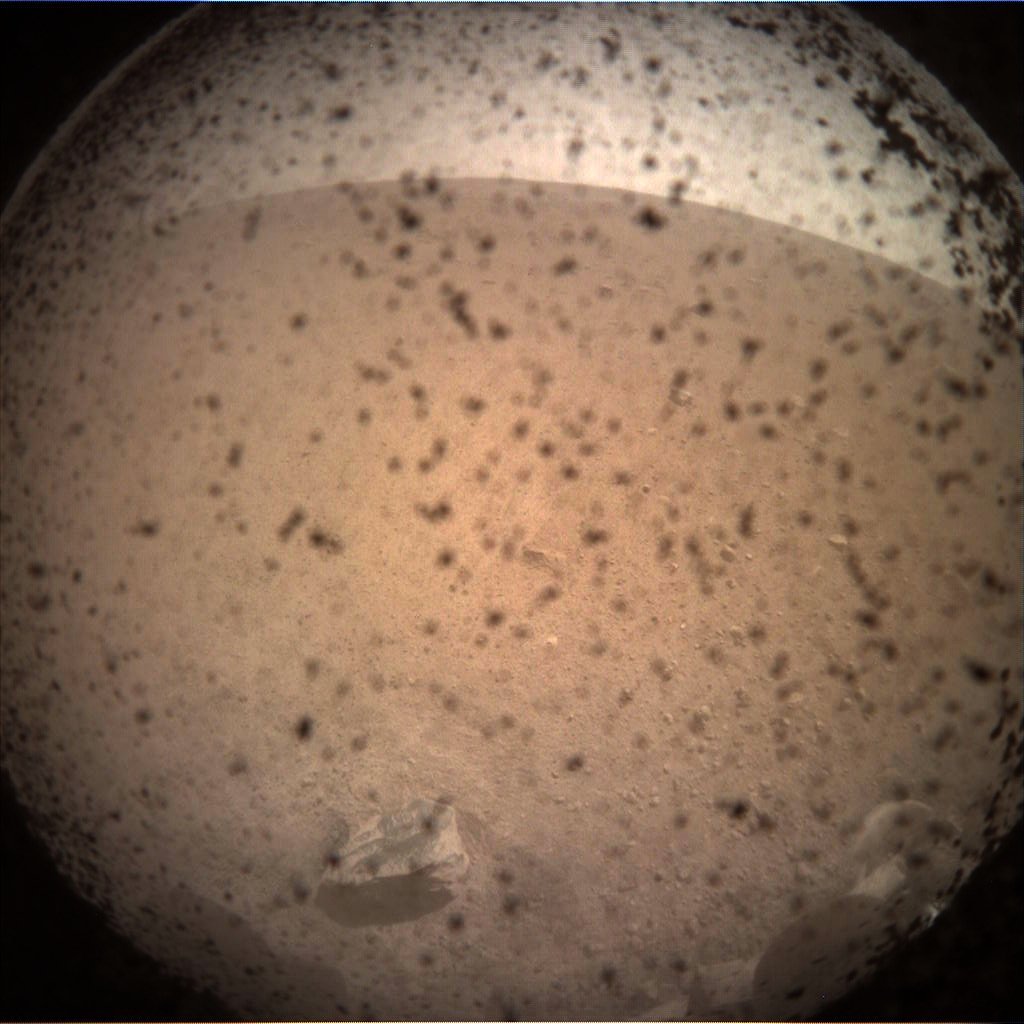
 Copyright © Michael Richmond.
This work is licensed under a Creative Commons License.
Copyright © Michael Richmond.
This work is licensed under a Creative Commons License.
On Monday, Nov 26, 2018, the Mars Insight spacecraft landed safely on the surface of Mars and sent back its first image:

Don't worry about all the dirt: a special dust cap is still covering the camera's lens. That cap was removed a day or two later, after all the dust kicked up by the landing had settled down.
So, another spacecraft on Mars. What's so special about this one? Will it roll over the surface? Is it supposed to find life on the planet, or do something else? How long will it continue to send back information to Earth?
Let's find out. Note that a very good place to find information about this and other NASA missions is
In particular, Planetary Society writer Emily Lakdawalla has covered this mission in detail for months. Much of the material you see below will be taken from her work. Thanks, Emily!
Contents
The main part of the spacecraft is the lander: the unit which descended through the atmosphere and touched down gently on the surface of Mars. One very good way to learn about Insight is to use the interactive model provided by NASA.
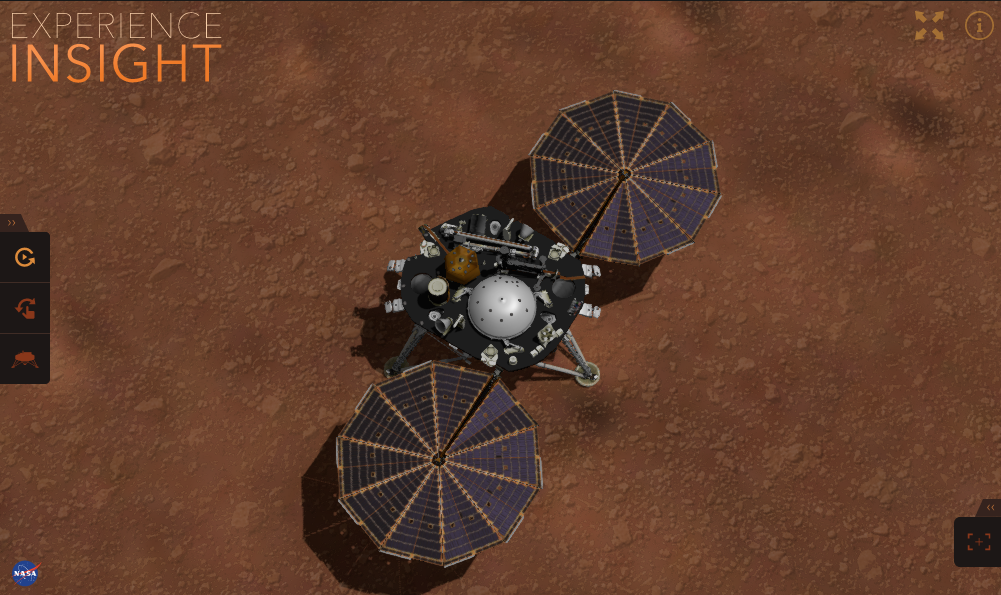
Image taken from the
"Experience Insight" web page
The picture above shows the two big solar panels after they have unfurled. Each is about 2 meters in diameter, and can produce roughly 300 Watts of power during a sunny day. Most days on Mars are sunny, of course; it's only the occasional dust storms which can cut down on the power supplied by the panels.
In the figure below, I've highlighted three of the main instruments aboard the lander.
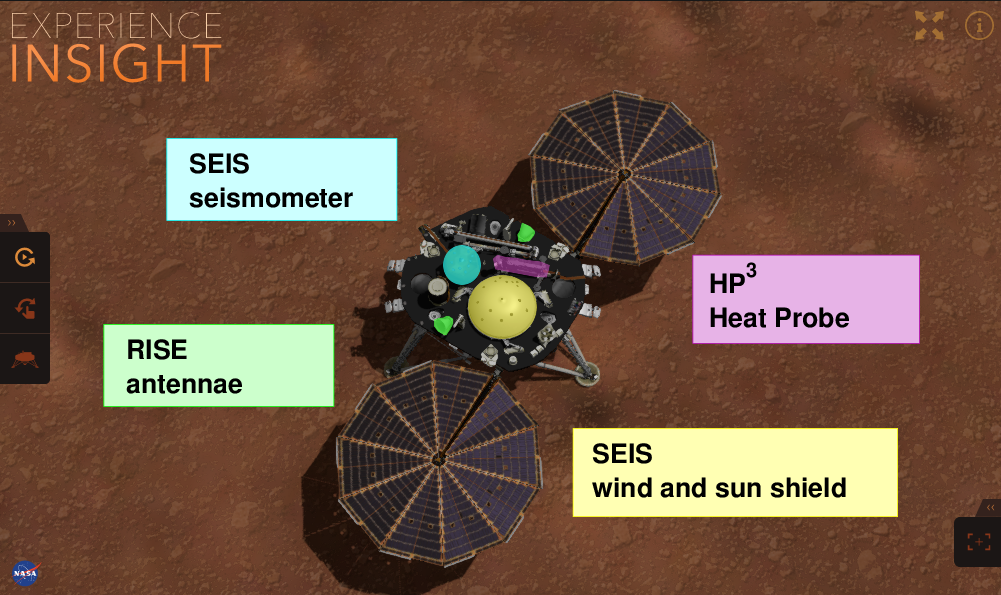
Image taken from
"Experience Insight" web page
and slightly modified
Let's talk about these instruments in detail.
This mission to Mars has a slightly different focus than the previous missions. Rather than taking pictures of the SURFACE of Mars, Insight will probe conditions BENEATH THE SURFACE. It will look "inside" the planet; some NASA resources describe it as "performing a checkup" on Mars.
Just as a doctor takes your temperature, Insight will measure on aspect of Mars' internal temperature: the heat flow from its deep interior to the surface. The Heat Flow and Physical Properties Probe, or HP3 for short, will burrow down to a depth of 5 meters below the surface. There, it will measure the temperature of the soil and/or rocks. In addition, it will send out pulses of energy into the surrounding material, then measure how long it takes for the heat to disperse.
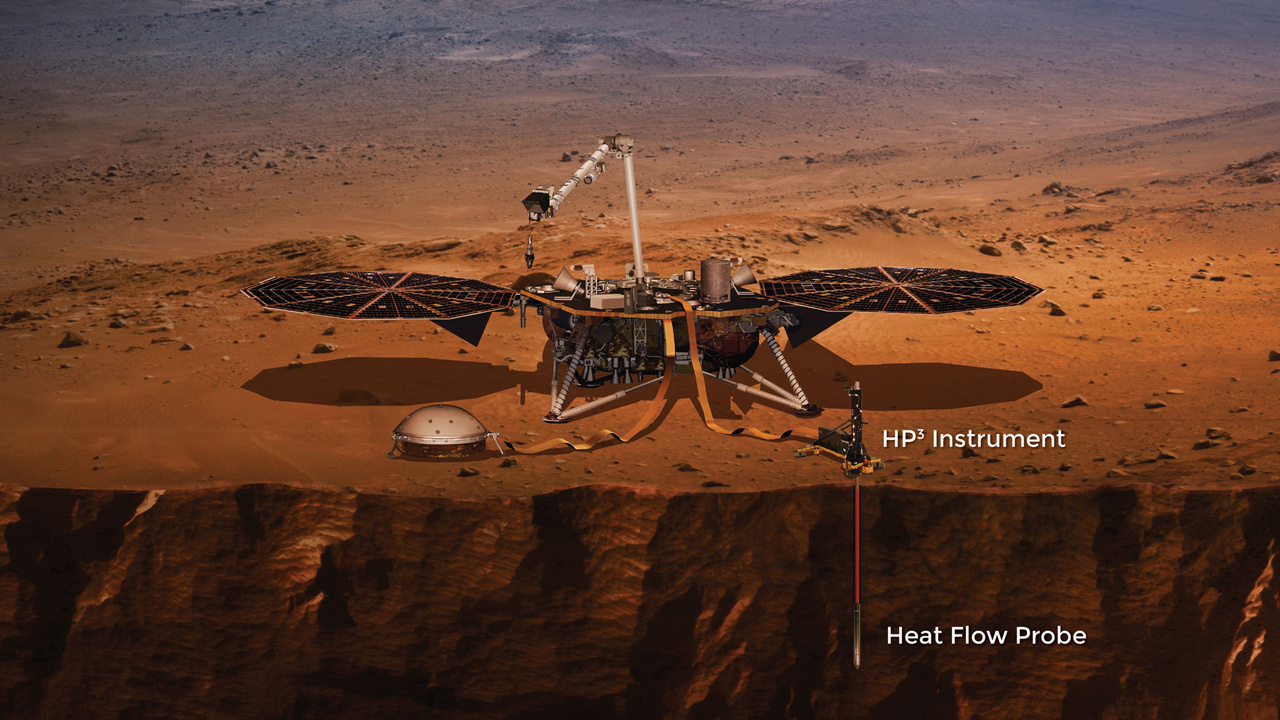
Image courtesy of
NASA
At the heart of this instrument is "The Mole", a 40-cm long device which contains both the digging mechanism and a number of sensors.
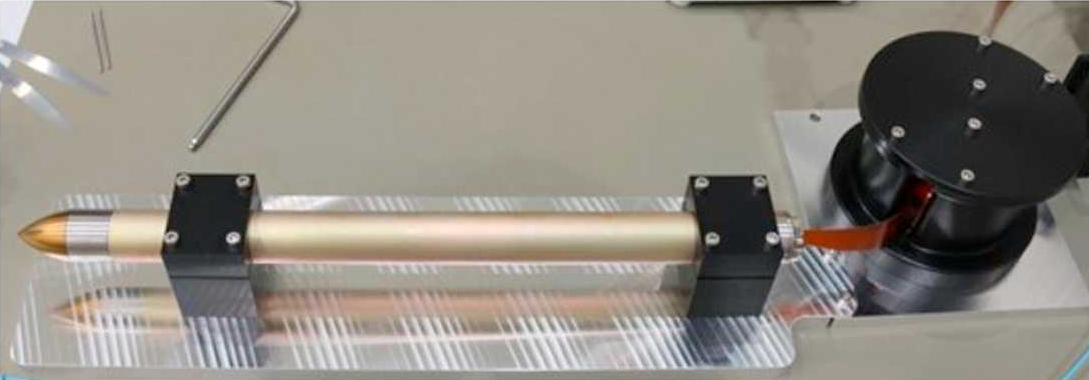
A portion of Figure 2 taken from
Spohn et al., Space Science Reviews, 214, 96 (2018)
Inside the Mole is a motor, springs, and other items that create the digging action. The green piece in the figures below is the hammer, which is repeated shot forward into the pointed nose to force the Mole another few millimeters into the soil.
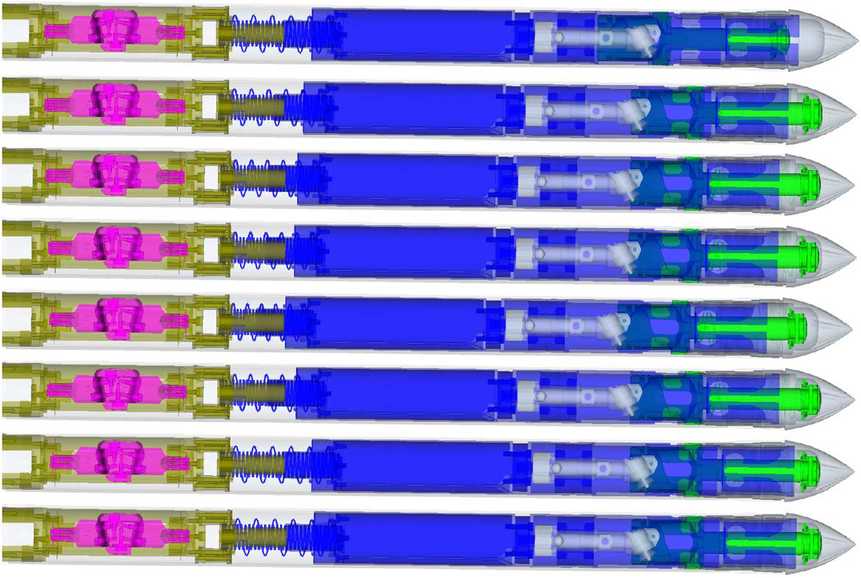
Figure 5 taken from
Spohn et al., Space Science Reviews, 214, 96 (2018)
It's a slow process, even when the device is asked to run continuously.
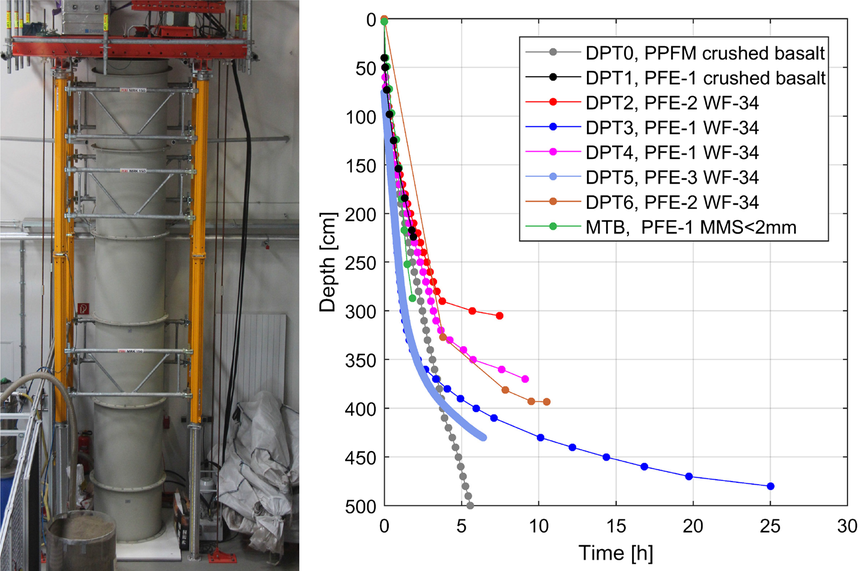
Figure 6 taken from
Spohn et al., Space Science Reviews, 214, 96 (2018)
But the scientists plan to take their time. The Mole won't be released until about 50 sols into the mission, and it will then be operated in brief bursts. After each bit of work, which will send it about 50 cm deeper into the soil, the probe will rest for a few days while it cools down and gathers measurements. If all goes according to plan, the Mole will take another month or so to reach its final depth of 5 meters.
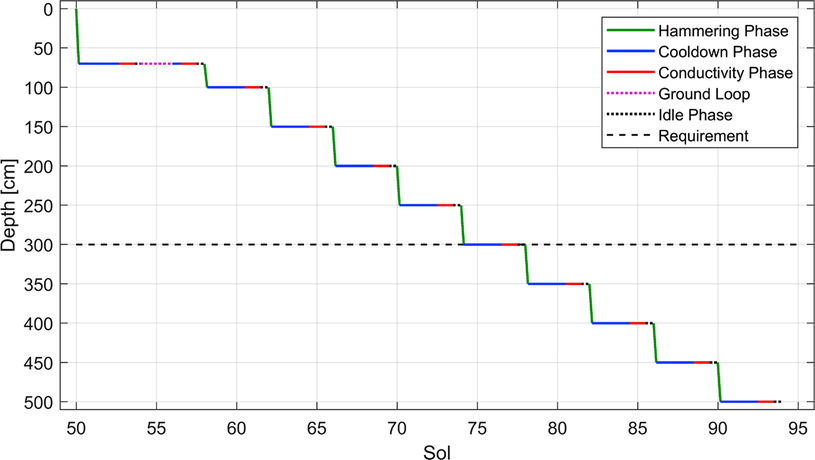
Figure 14 taken from
Spohn et al., Space Science Reviews, 214, 96 (2018)
But wait -- going down into the soil is only part of this experiment. It's also necessary to measure the temperture at the surface itself, to compare with the sub-surface properties and to determine how much energy is radiated away. The HP3 radiometer (RAD) is mounted on the underside of the lander. It will measure the infrared emission from the surface in two small patches a few meters away from the lander.
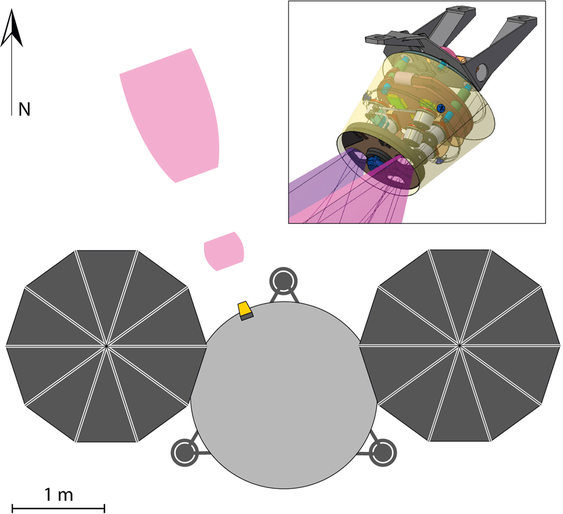
Image 11 taken from
Spohn et al., Space Science Reviews, 214, 96 (2018)
The other main goal of the mission is to sense seismic activity inside Mars. Way back in 1976, the two Viking landers each brought a seismometer to the Red Planet. However, scientists were disappointed in the results:
But, because the instrument was mounted on the on the main spacecraft body, it was rocked by the winds, and could not detect the small vibrations due to any seismic activity on Mars. Double rats!
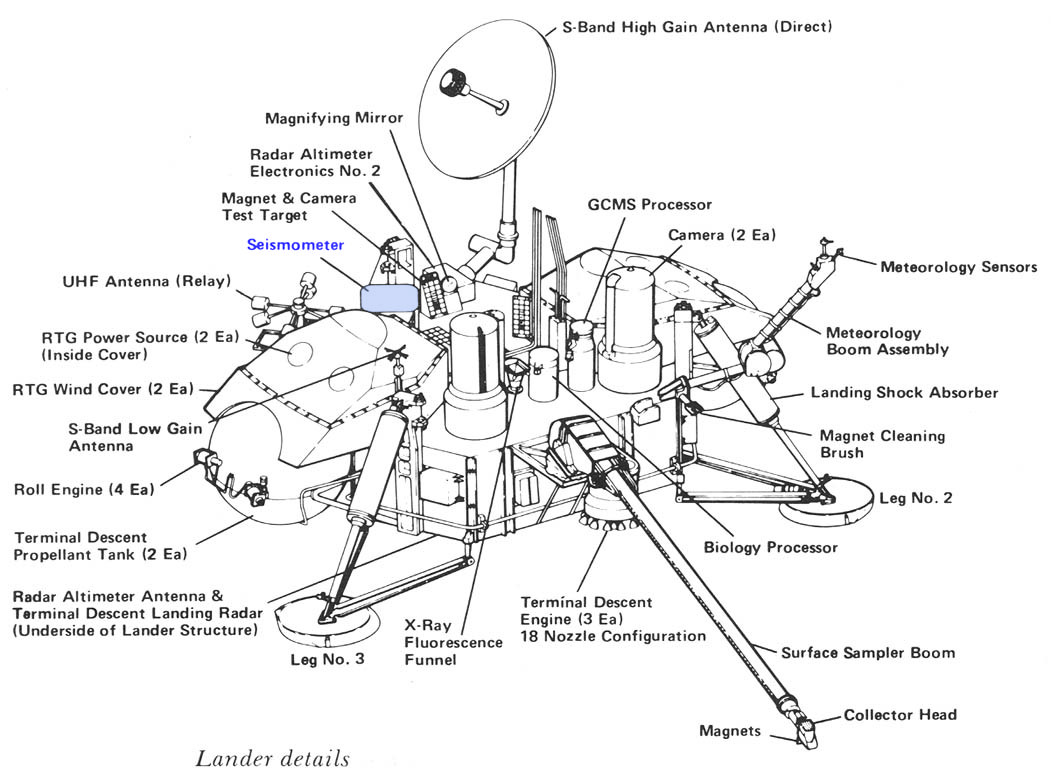
Image modified slightly from
Roger Launius's Blog
The Seismic Experiment for Interior Structure (SEIS) contains a number of seismometers, carefully isolated from the effects of wind and sun by a hemispherical cover.
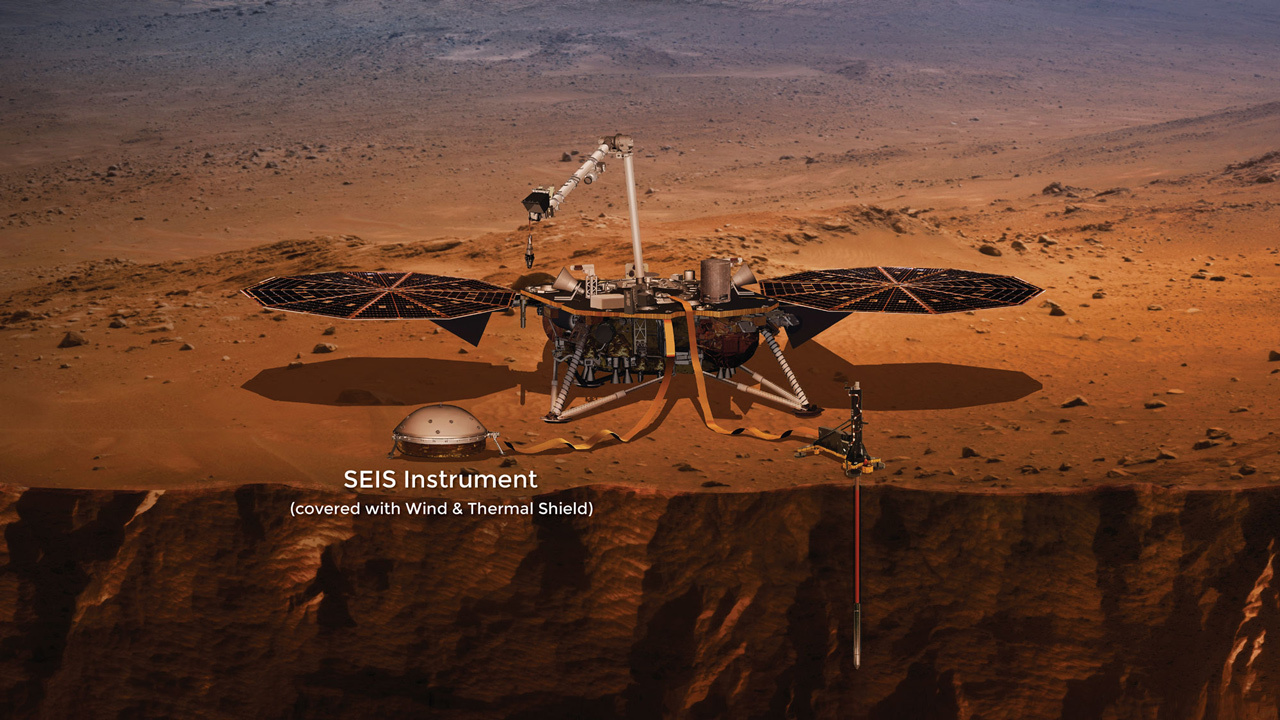
Image courtesy of
NASA
The SEIS unit must be picked up by Insight's robot arm and placed very, very carefully on a level patch of ground.
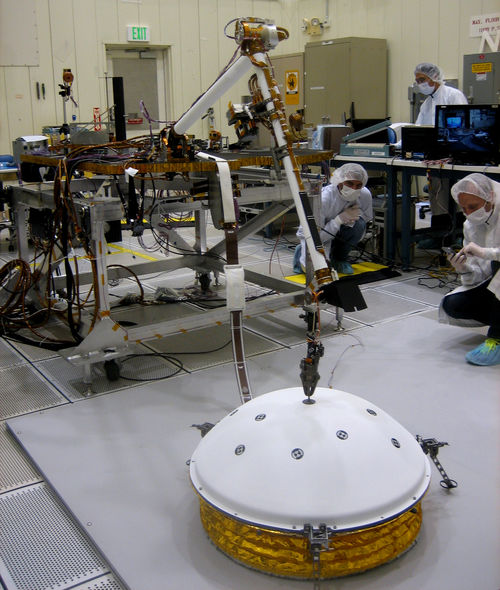
Image courtesy of
NASA
Because the instruments inside are so sensitive, the SEIS package must be placed on the best possible location around the lander. In order to find this best location, the Insight team will carry out a very elaborate procedure:
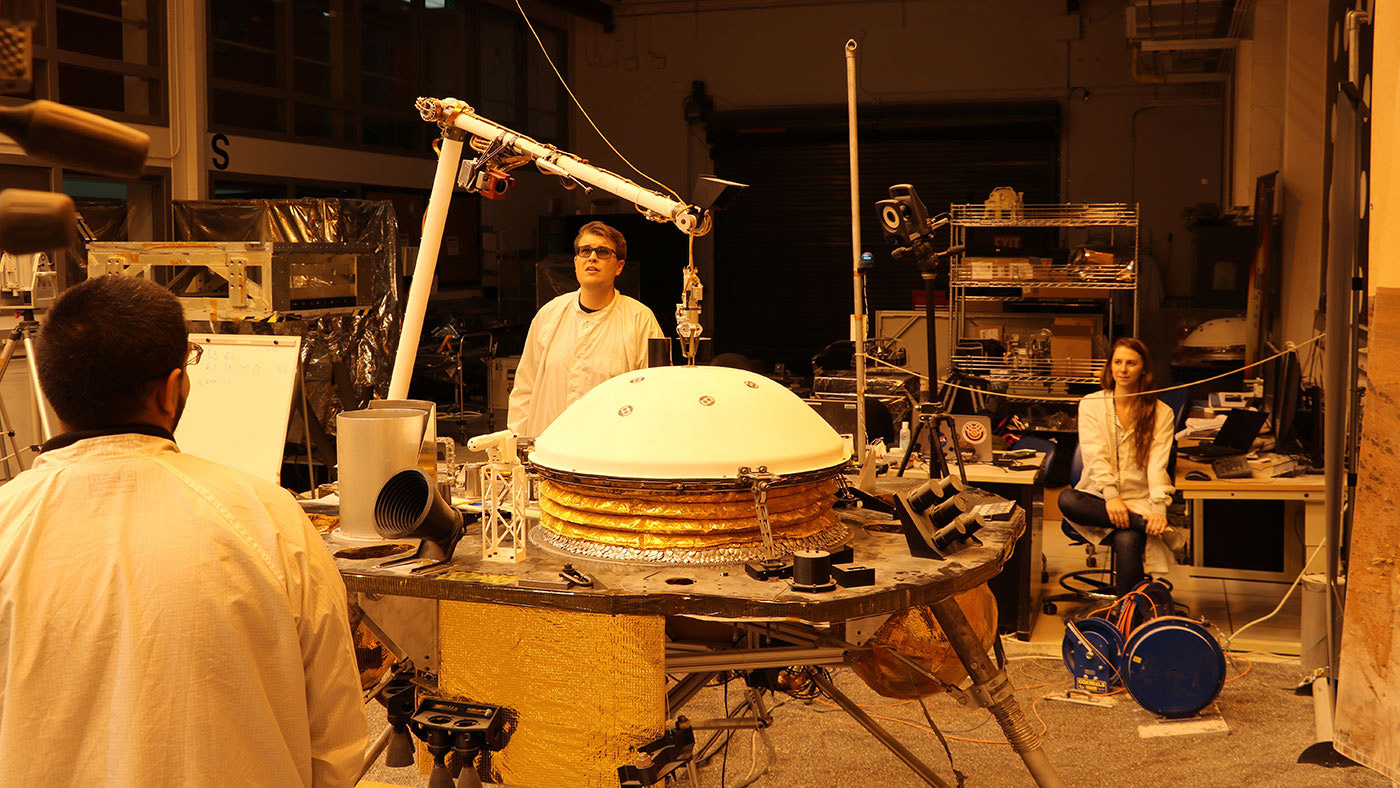
Image courtesy of
NASA/JPL-Caltech
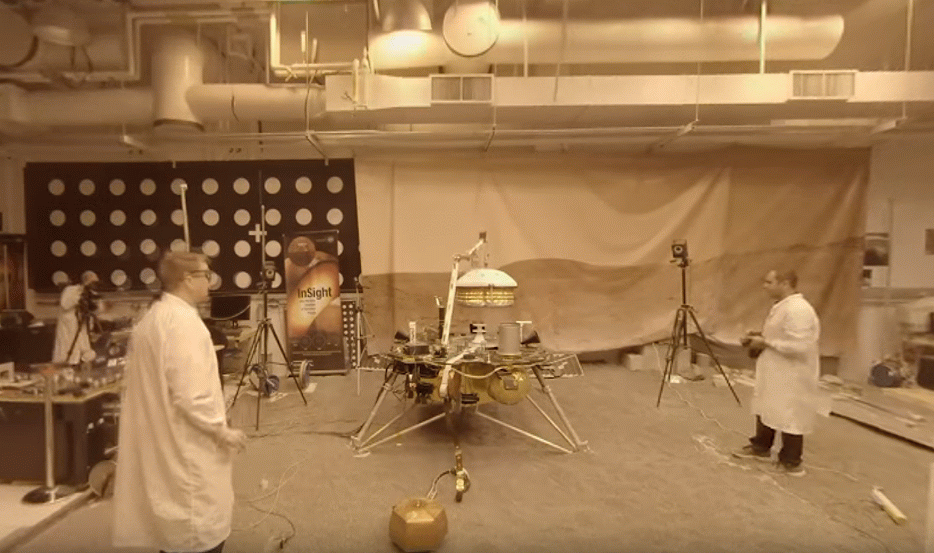
Still taken from a video courtesy of
NASA/JPL-Caltech
This procedure will take very roughly one month of time. Once it has finished, the SEIS instrument will be safely esconsed within its protective shell, ready to start measuring any vibrations in the ground that may occur.
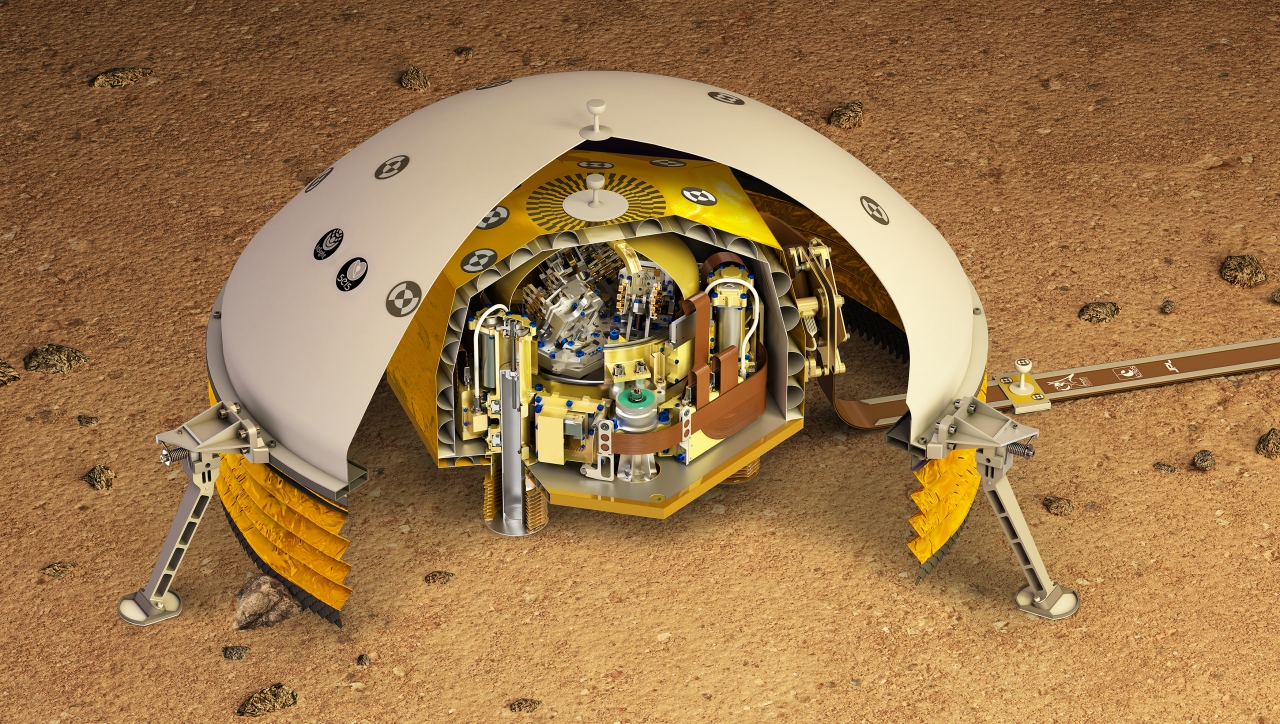
Image courtesy of
IPGP/David Ducros
The third big instrument on the lander is Rotation and Interior Structure Experiment (RISE), which uses radio signals to track the position and motion of the lander very precisely. Since the lander is fixed in place on the surface of Mars, that tracks the position and motion of the planet itself.
RISE employs two medium-gain antennae to send and receive radio signals.
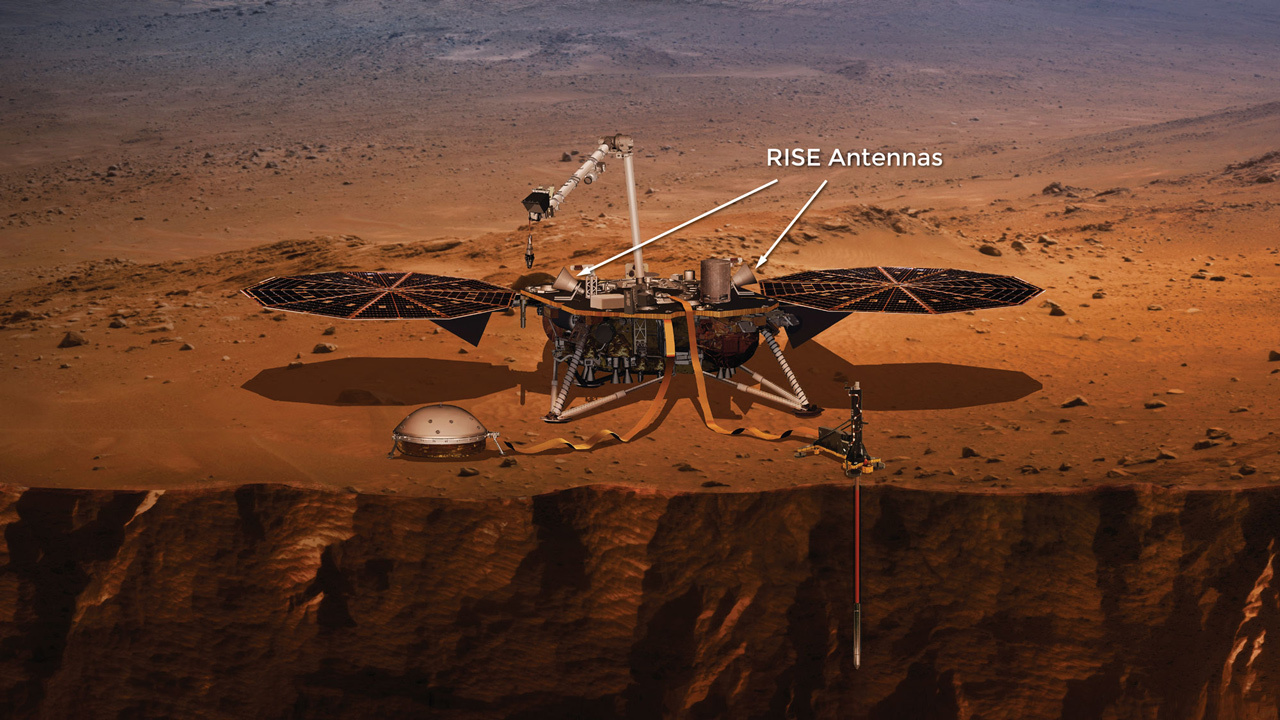
Image courtesy of
NASA
The basic idea is that scientists on Earth send a signal to the spacecraft once each day, over course of an hour or so. As soon as the spacecraft receives the signal, it sends a reply back to Earth. The time between transmission and reception of the reply provides the distance between the Earth and Mars; the changes in wavelength between the signal sent by RISE, and received on the Earth, reveal via the Doppler effect the motion of the lander relative to the Earth.
RISE should provide scientists with measurements of the lander's location to a precision of just 10 cm or so! With such precise values, it should be possible to determine the very small "wobble" of Mars' rotation axis due to the gravitational pull of the Sun. The size of that wobble can provide information about the interior structure of the planet, such as the size and nature of a molten core.
What's a "cubesat?" It's a little satellite, stuffed into the shape of a cube. Naturally.
Over the past few decades, as computers and sensors and circuitry have shrunk, some engineers have created very small satellites. Because they are small, they are inexpensive, can be designed and built quickly, and don't cost much to launch. That's the good news. The bad news is that they have limited abilities: one can only fit so much stuff into a small package.

Image courtesy of
NASA Ames
NASA has been intrigued by the idea of using these little spacecraft to carry out small tasks, as part of larger missions. As a test, two cubesats were launched together with Mars Insight on an Atlas V rocket. Soon after the upper stage finished its burn, it released the two little spacecraft, which made the long journey to Mars independently from the main Insight vehicle. Once released, MarCO-A and MarCO-B unfolded their solar panels and antennae.
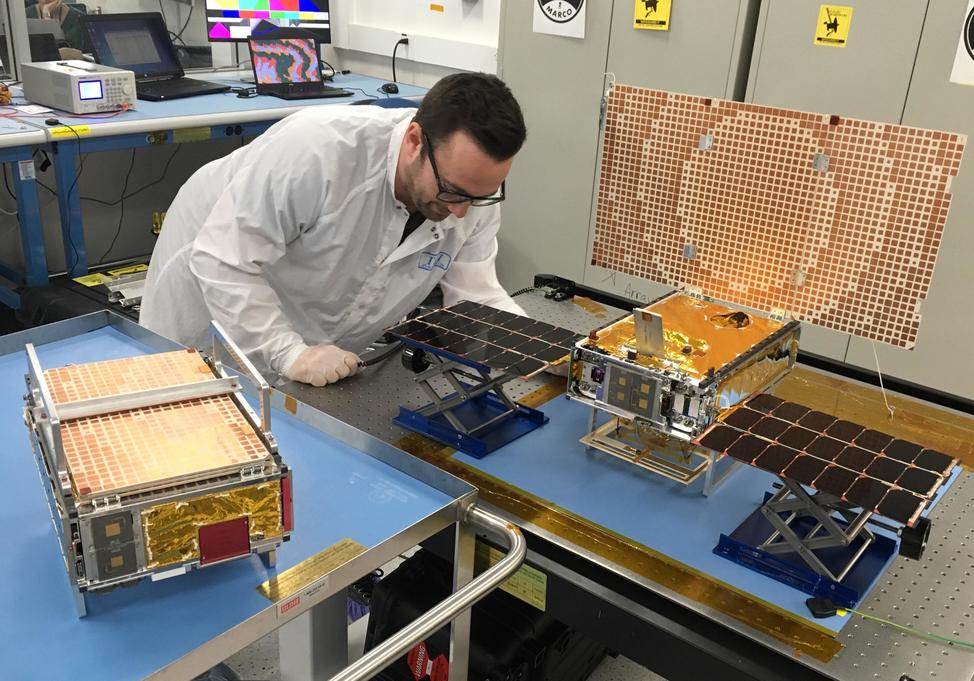
Image courtesy of
NASA/JPL-Caltech
MarCO-B took this picture of Mars as it approached the planet.
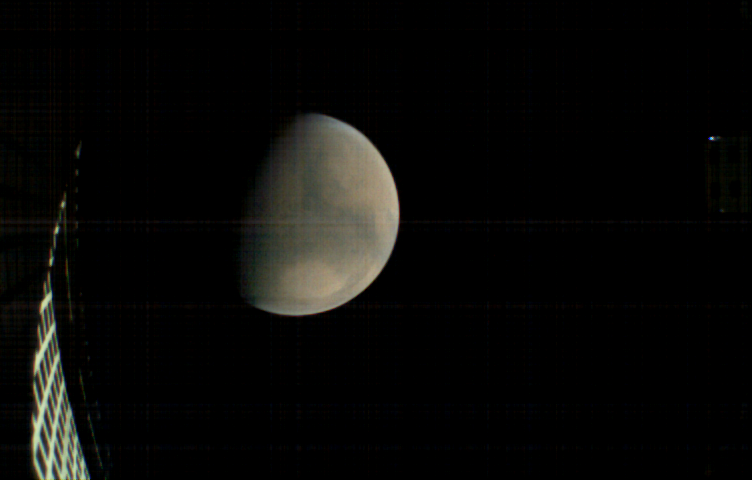
Image courtesy of
NASA/JPL-Caltech
The MarCO units continued on their trajectory past the planet while the lander was plunging down through the atmosphere. The goal was for the little satellites to relay signals from the lander -- as it fell to the surface -- back to Earth. Only they would able to transit those signals back to Earth during the descent.
(Click on the image below to watch a short movie explaining their job)
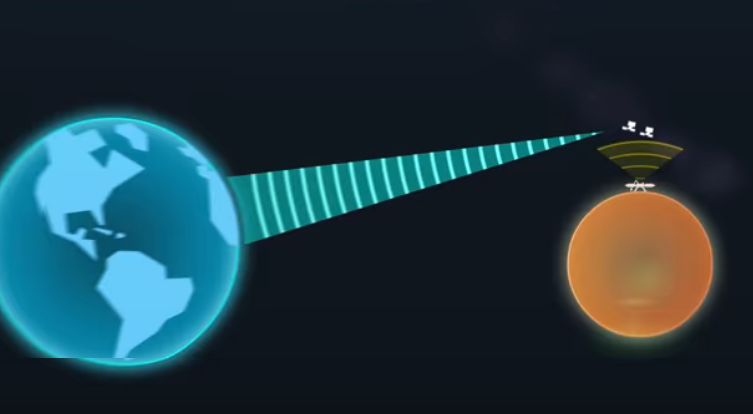
Image taken from the movie at
NASA's Mars Cube One website
What happened to the cubesats after the landing? They will continue to fly past Mars and off into the solar system; NASA has no real plans for them, although they may monitor them to see how long the hardware lasts. MarCO-B took this picture as it was flying away from Mars.
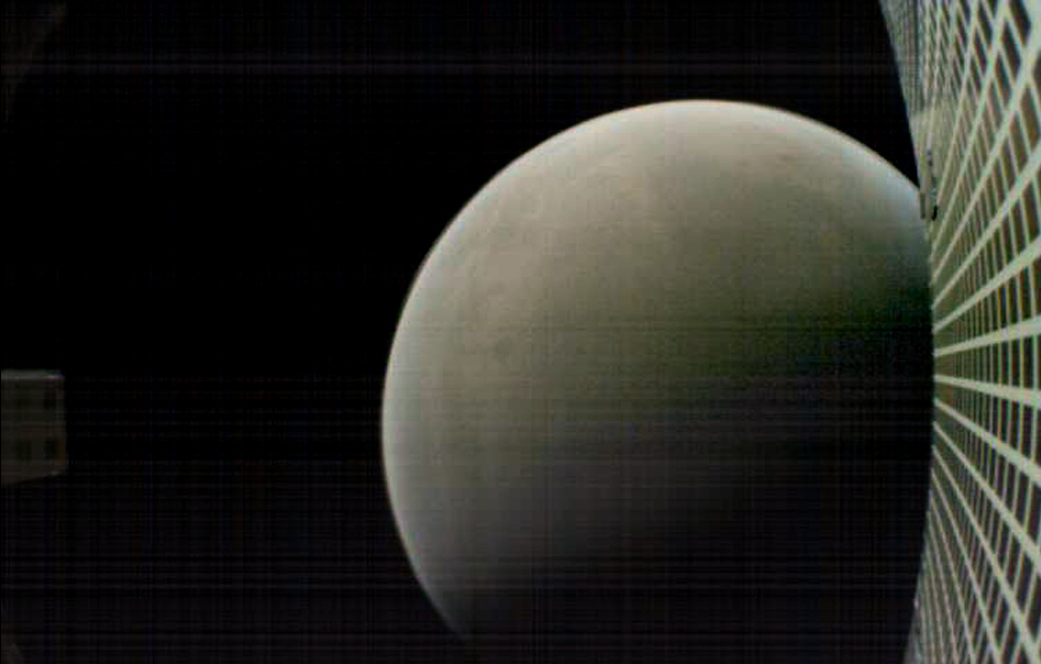
Image courtesy of
NASA/JPL and the Planetary Society
The method used by Insight to reach the ground was somewhat simpler than the "sky-crane" approach of the much larger Mars Curiosity mission. To see the procedure in motion, you can watch a short, simple clip ...
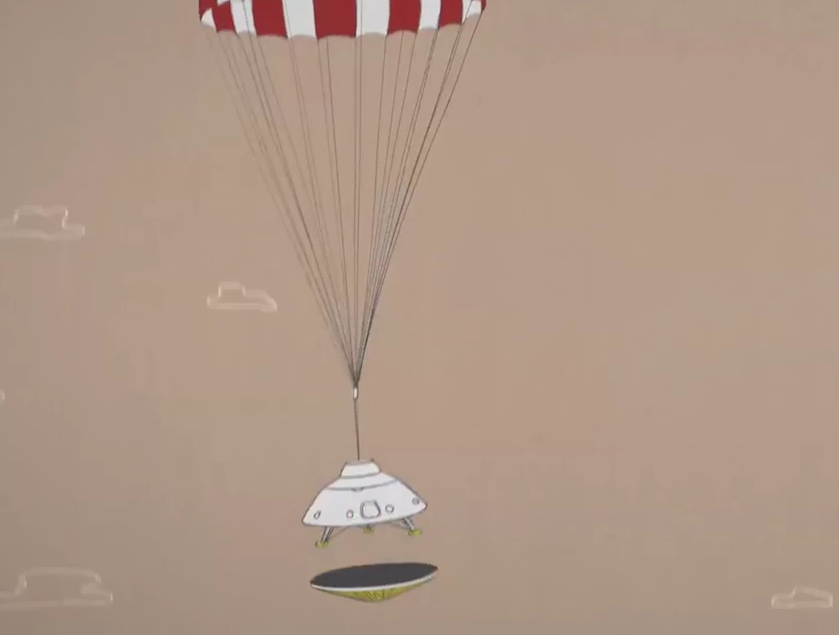
Animation of Mars Insight landing courtesy of
The Planetary Society Blog
... or, if you prefer, see a much more detailed animation (I suggest skipping ahead to 0:38 or so).
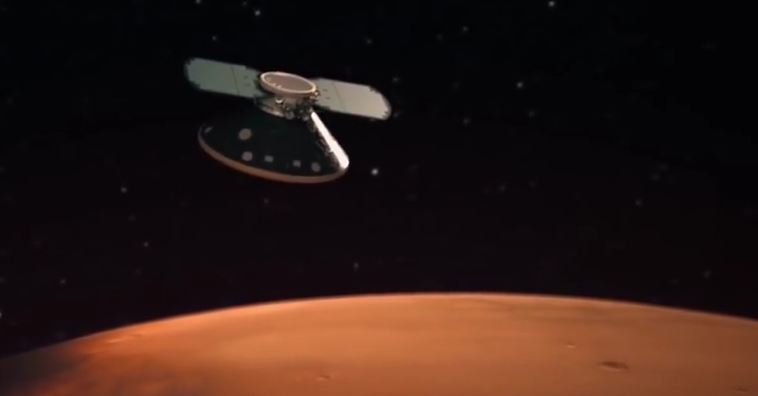
Movie courtesy of
Lockheed Martin
If you want all the details of the procedures by which the spacecraft prepares to leave space and enter the Martian atmosphere, read Emily Lakdawalla's blog entry for Nov 12, 2018.
Click on the image below for a larger version.
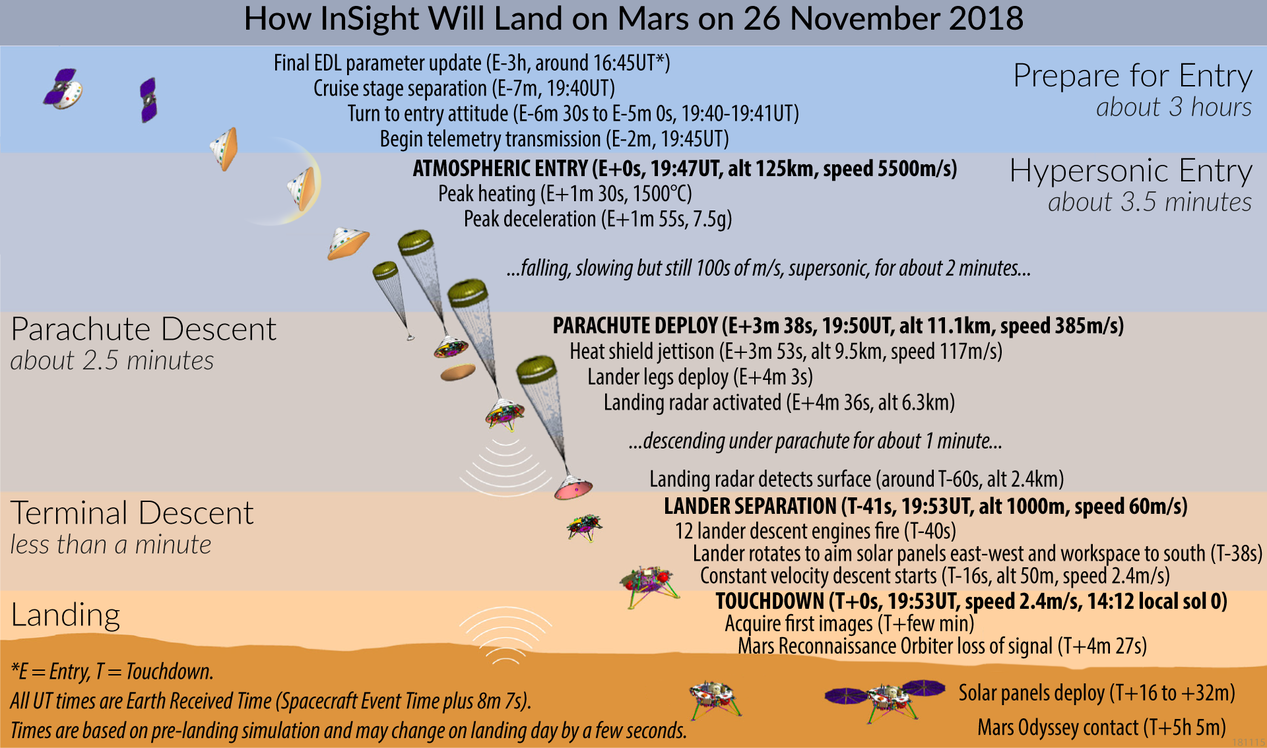
Image courtesy of
Emily Lakdawalla for The Planetary Society
And ... on November 26, 2018, it all worked! Insight gently settled on the surface of Mars at about 18:52:59 Universal Time. What has it done since then?
Well, just a minutes after landing, Insight extended its solar panels so that it could recharge its batteries. All went well, and the panels are providing plenty of power for the spacecraft.
The next day, Insight unlatched its robotic arm as the first step in its eventual use to deploy the main instruments. The two-frame animation below shows the arm moving slightly as the latch mechanism releases it.
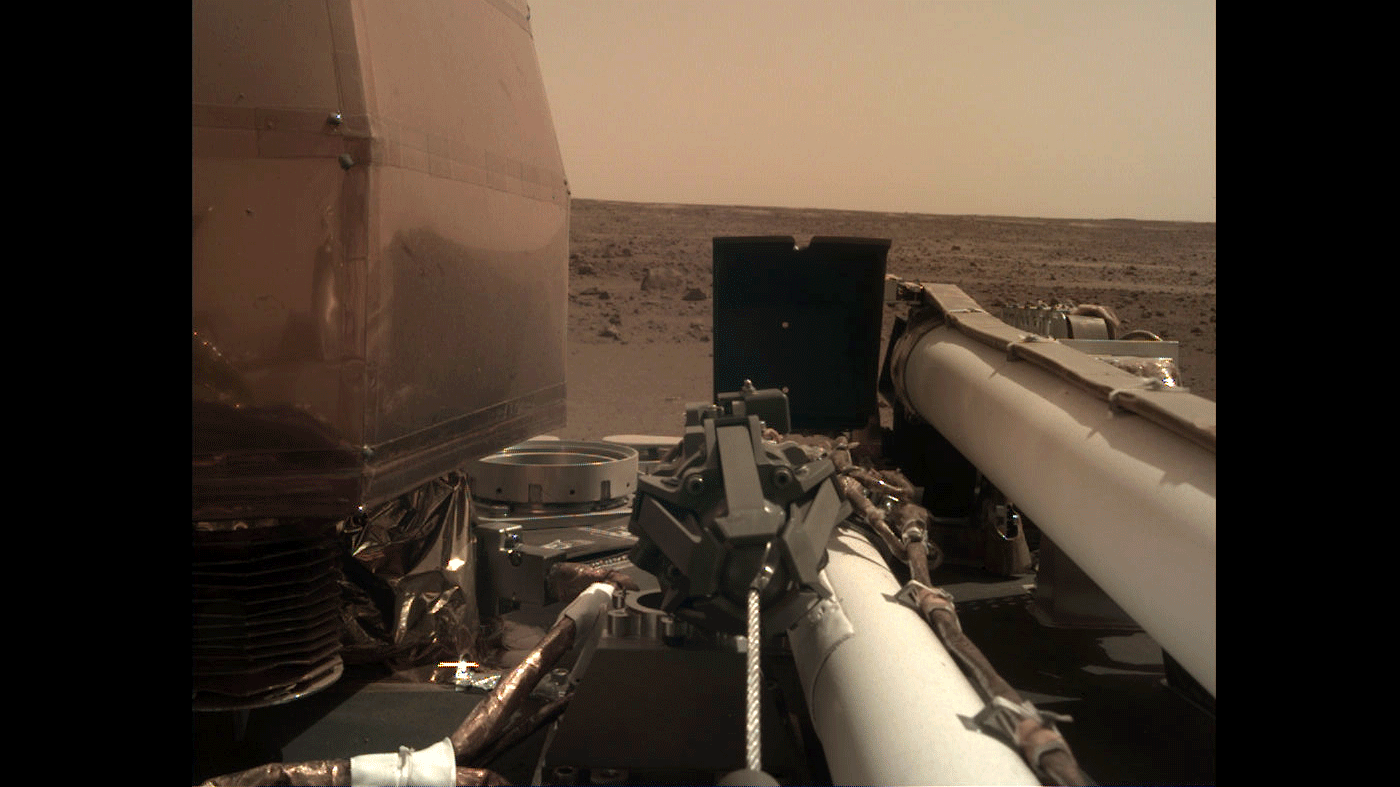
Image courtesy of
NASA/JPL-Caltech
Since then, the RISE radio instrument has been "bouncing" signals sent from the Deep Space Network back to Earth each day, and the engineers responsible for the other instruments have been checking them out. It will be a few weeks, or even months, before we hear any of the first results from those instruments.
 Copyright © Michael Richmond.
This work is licensed under a Creative Commons License.
Copyright © Michael Richmond.
This work is licensed under a Creative Commons License.